

London University was, indeed still is, a HUGE organisation even by the standards of this place. It's a collegiate university.
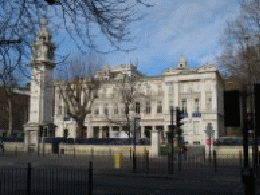
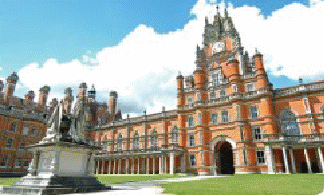
The individual colleges spread across the capital from Queen Mary College in the east end to the baroque splendour of Royal Holloway in leafy Egham built, you may be interested to learn, upon the proceeds of Victorian patent medicines hardly any of which had any beneficial effect whatsoever.
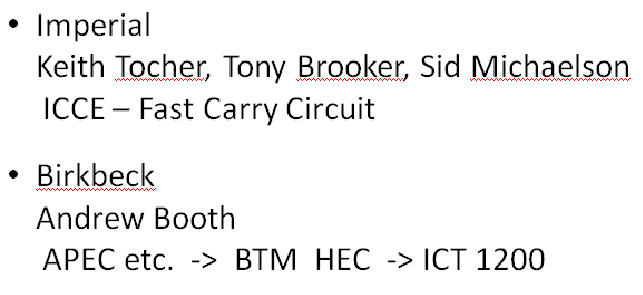
In the "build it yourself" era, two of the colleges took the plunge. At Imperial College, Keith Tocher, Sid Michaelson and Tony Brooker constructed the "Imperial College Computing Engine" using relays. With the benefit of hindsight, this looks like a dead end in development. But Imperial weren't the only team to put their faith in relay technology. Neither were they the last. Yet amazingly, the legacy of ICCE lived on because of a chance lunchtime conversation years later between Tom Kilburn and Tony Brooker, the Atlas adder logical design was derived from that of ICCE.
Over in the unlikely surroundings of Birkbeck College, Andrew Booth was building a series of low cost, low performance machines. His ambition was to build computers cheap enough for every college to be able to afford one. You might say he invented the minicomputer a decade before anybody noticed. His designs were taken up by the British Tabulating Machine company and became the ICT 1200 series; for a while the most popular computer in the UK.
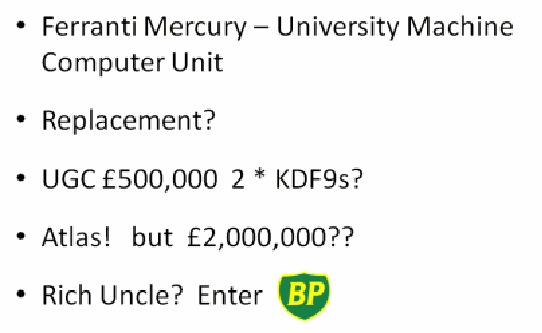
By 1960 that era was closing. The University had installed a Ferranti Mercury as a resource shared between the colleges. But quite quickly the machine was full to bursting. Then along comes the University Grants Committee who, recognising the need for university computing, gave £500,000 to London and to several other universities. Well, £500,000 might have bought a KDF9, maybe two, but that wasn't going to satisfy London. For London University, nothing less than a Ferranti Atlas, the fastest machine in the world, would do. But there was a funding gap of £1,500,000. How to close the gap?
Not far away, there was another organisation whose computing resources were being stretched to breaking point.
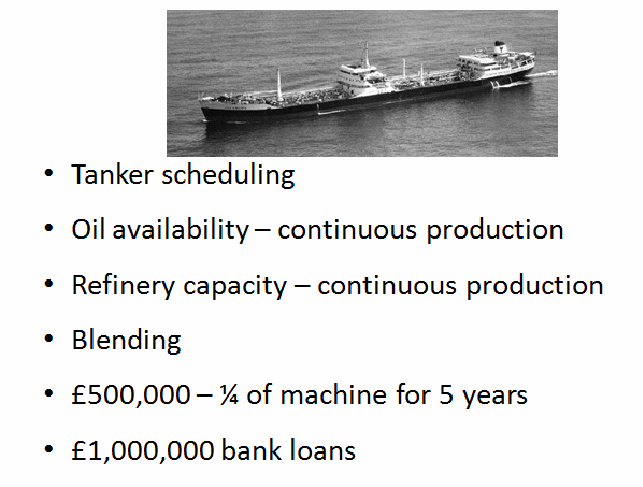
British Petroleum was using an IBM 7090 to do tanker scheduling. If that sounds like the classic "travelling salesman problem", well it is. But it's more. It's about keeping lots of very expensive assets in continuous production. Oil wells, storage facilities, tankers all must be kept in use without exceeding the available storage, or letting it run dry. Then at the receiving ports, the same problem in reverse. So tanker scheduling is one of those problems without a correct answer, just a "best" answer. Such problems are notoriously hungry of computer power. And the reward for getting the best answer is to make the best use of expensive resources - oil tankers. So if you can delay construction of your next tanker for a year or so, you're quids-in. So BP was persuaded to stump up another £500,000 in exchange for up to one shift of machine time every day for 5 years.
Then as now, if you go to the banks and ask to borrow £1,000,000 you'll be lucky if they show you the door without laughing. But if you already have £1,000,000, it'll be "Would you like cash or a cheque sir?". The problem is that loans have to be repaid.
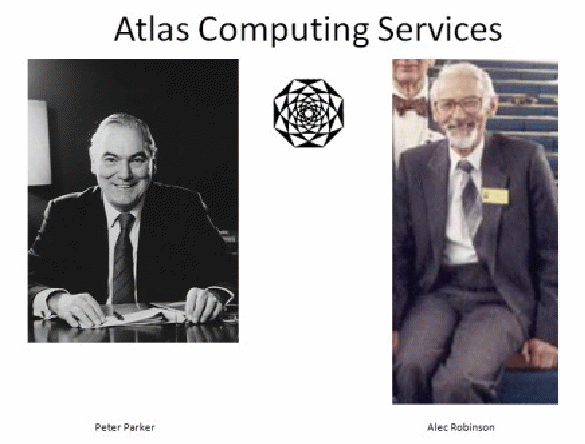
So the university set up a bureau operation - Atlas Computing Service, to sell more machine time and run applications for commercial clients. Managed by Alec Robinson; many people here will recognise Alec from his time on the Mark 1; and chaired by Peter Parker (subsequently one of the better heads of British Railways) we set about bringing in money to pay off the loan.
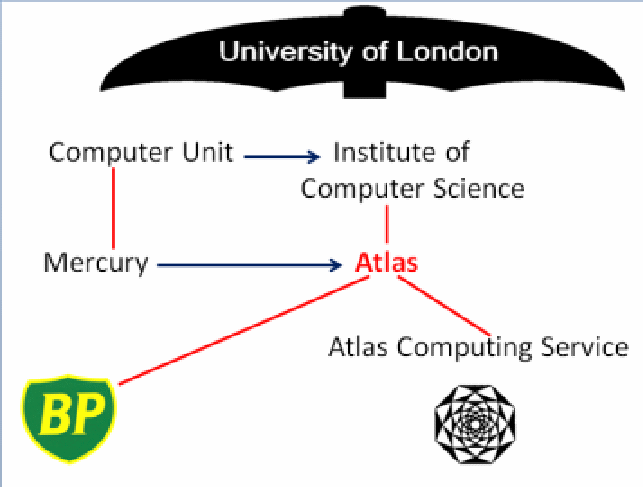
There was another interested party. Mercury had been lovingly tended by a group called "The Computer Unit" headed by Dick Buckingham. At around the same time that Atlas arrived, the Unit morphed into a fully-fledged academic department called "The Institute of Computer Science". An MSc course was initiated (as was popular elsewhere) and several of its graduates went on to distinguished academic careers. Some of them are here with us today.
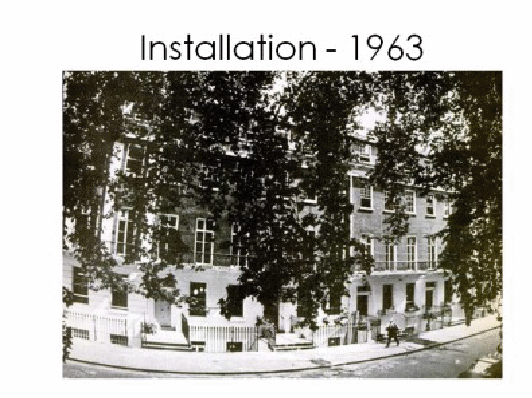
So, finally Atlas was delivered at the end of 1963. Its home was a handsome Georgian terrace on Gordon Square in Bloomsbury - once the home of such luminaries as Virginia Woolf, Vanessa Bell, John Maynard Keynes, Lytton Strachey and a young Christopher Strachey - some people here will remember him at least. To be exact, Atlas was installed in an ugly, windowless, two storey brick building occupying several back gardens which must have been the despair of the people living in Tavistock Square.
Meanwhile, Imperial College, then as now a law unto itself, had acquired a 7090 donated by IBM. As if that wasn't enough, they also had a data link with Atlas so they had the luxury of a choice between the two.
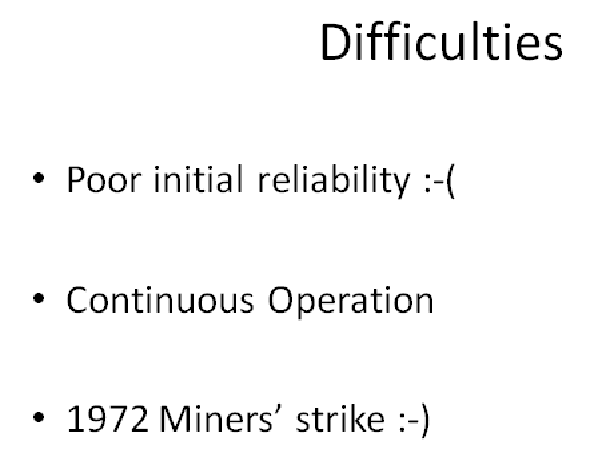
At first Atlas failed to distinguish itself. The reliability was, to put it mildly, poor. There is a story (and I stress I wasn't there) that a few months after delivery, Atlas ran for a whole hour without breaking. A small crowd had gathered to witness the event and they burst into spontaneous, possibly sarcastic, applause to celebrate. Slowly, very slowly, it got better.
One thing we learned was to avoid switching the machine off. Despite it costing a small fortune in electricity it was only ever switched off at Christmas, and only then because it would be unattended. Our ICT engineers came to an arrangement with the London Electricity Board that they would give us an hour's notice if there was going to be a power cut so the machine could be closed down carefully. During the 1972 miners' strike it was said that the closer you were to Fleet Street, the more power cuts you got. We were 2 miles away. Such niceties as giving notice were gaily abandoned. Our engineers were furious. It took 2 days to get the machine back. Then another power cut, and another, and another. When it was all over, recovery time had become quite reasonable. By this time the workload was running down. We started switching off at weekends to save money. If only we had known!
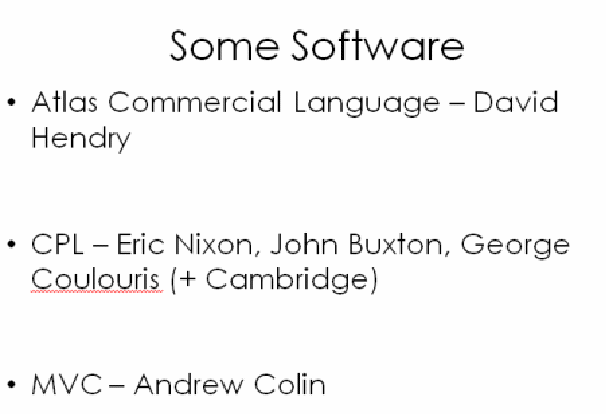
The bureau and the Institute did develop some rather interesting software. The first need of the bureau was for a programming language which could be used for what we used to call "Data Processing". The obvious solution was a COBOL compiler. But that wouldn't have been a good idea. COBOL spends an inordinate amount of energy in manipulating characters - not really Atlas's Forté. COBOL also assumes that one character is the same thing as one card column and one print position. The Atlas inner set/outer set character scheme blew a hole through that. So David Hendry came up with Atlas Commercial language (ACL) certainly inspired by COBOL, but rather different. There was a strict separation between numeric and character data. All numerical data was held in binary fields. Conversion only took place when reading cards or printing lines.
Like contemporary COBOLs ACL also did pounds, shillings and pence fields. All money fields were held as pence. Rather late in the day, in late 1970, we realised the decimalisation was almost upon us. Roger Trendell proposed a magic bullet. He proposed to change the I/O routines so that money amounts read from cards were converted from pounds and new pence to old pence - vice versa on output so that all calculations (and , crucially all the money fields on tape) continued to be in old pence. We wrote to all our commercial users giving details of the scheme and pointing out the possibility of rounding error. We said we could change their programs and modify their data to do it properly or we could do it Roger's way without charge. Without exception they all opted to take the easy way out. If they hadn't we couldn't have coped anyway.
Meanwhile, in the Institute, Andrew Colin was developing software for survey analysis - Multi Variate Counter - MVC. The usual form of such software was a "package" which sucked in parameters to specify what should be done and data to do it to. Andrew seems to have recognised that a survey questionnaire is a bit like a programming language - "if you answered no to the last question go to Question 17". He produced a language in which the programmer could specify a close analogue of the questionnaire and then the required tables to be output. As you might expect, some rather unconventional variable types were used. Two features stood out. The variable names served the additional purpose of identifying rows and columns in the tables which were output. This saved the effort of specifying the same thing twice and eliminated a source of error. Today we take for granted that if a spreadsheet is too wide for the paper, a second sheet will be printed. In the 1960s that was genuinely novel. I could go on. Indeed, I have gone on for both Andrew and I have written it up in Resurrection. MVC was a tour de force and though it was intended for university use - social sciences, medical research and so on. But the bureau used it too for market research analysis and made lots and lots of money.
The final important piece of software I should mention was CPL. But David Hartley is here so I'm not going to embarrass myself. Suffice to say that CPL was yet another attempt to produce a "universal language" derived, in part from Algol 60. Eric Nixon and John Buxton were the London participants, but George Coulouris did the hard work of producing a compiler for the London Atlas - something Cambridge never managed - though sadly, it never saw much use. Another dead end? No! For via the medium of Martin Richard's BCPL and Dennis Richie's C programming languages, nearly all current programming languages have something of CPL coursing through their veins.
While all this was going on the world outside was moving on. As the cost of hardware fell the colleges acquired their own computers - slowly at first
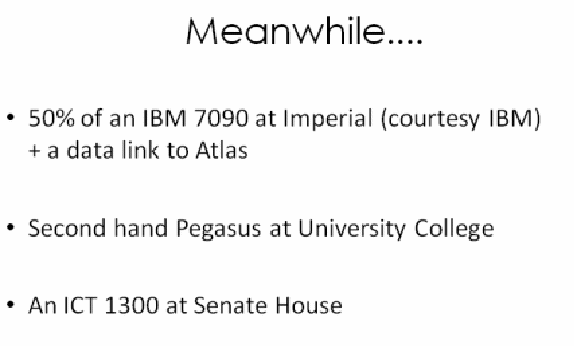
And then at a faster and faster pace.
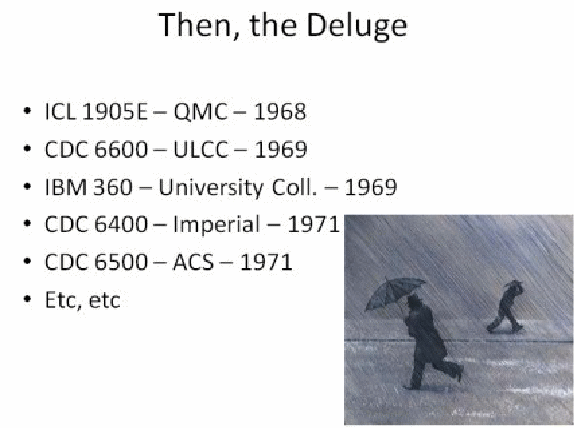
By 1968 thoughts had turned to a replacement for Atlas. The Flowers Report had proposed the notion of "Regional Centres" of which London would be one. A CDC 6600 was ordered and installed at a new "University of London Computer Centre" nearby. The university workload slowly transferred to it. A new team supported the machine but without any academic responsibility - the Computer Unit had been re-created. ULCC still exists supporting the University network and servers, but its role as a provider of mainframe power is long gone.
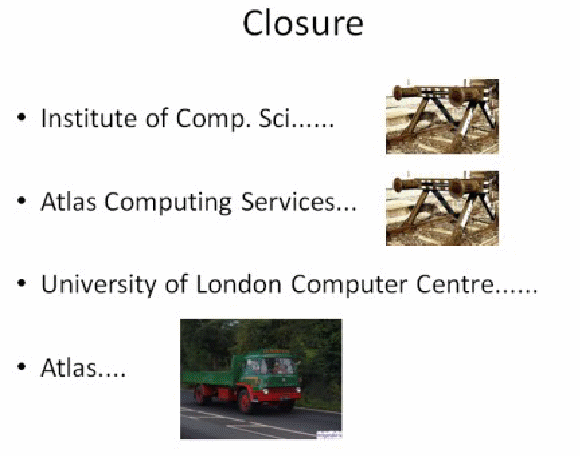
The University decided that the Institute had outlived its usefulness and it closed with the staff being transferred to various colleges. There seems to have been some concern that Institutes weren't supposed to award their own degrees - just provide credits to students from the colleges. But perhaps the truth was that the economics had changed. The colleges, having acquired their own hardware were keen to offer the new and fashionable subject of Computer Science as part of their portfolio. The Institute was just in their way.
The bureau acquired a CDC 6500. The days of easy money being made from bureau services was passing and the 6500 wasn't really suitable anyway. It wasn't a success and fell into the hands of its creditors in 1975.
The London Atlas closed that the end of 1972 on a Sunday afternoon following one last Orion tape to half inch tape conversion - a good source of revenue over the years. Hardly anybody was there to witness the event. A single bottle of champagne sufficed for the occasion and the power was switched off for the last time. Over the following days the machine, so carefully tended for so long, was brutally taken away on the backs of open lorries. It was all very poignant.
One member of staff was never quite the same again. My then boss said "It was cruel. Atlas was his only friend." That might seem an extreme reaction but perhaps we all lost something that day and on the other, similar days which had been an important part of our lives. Why else would we be here today?